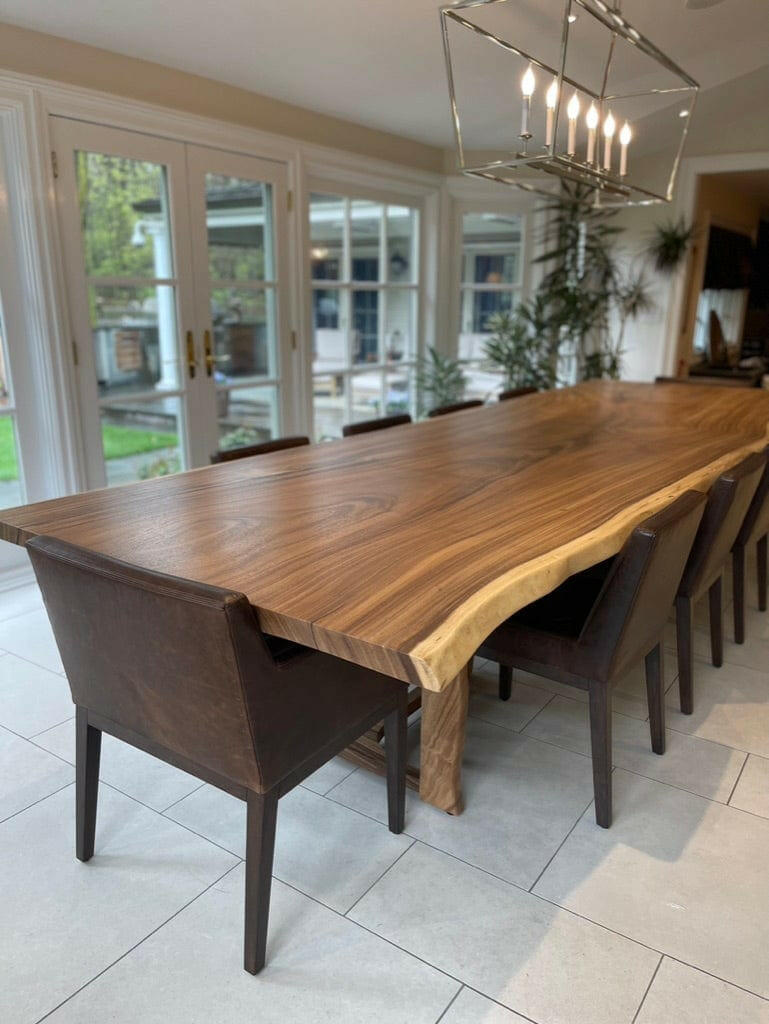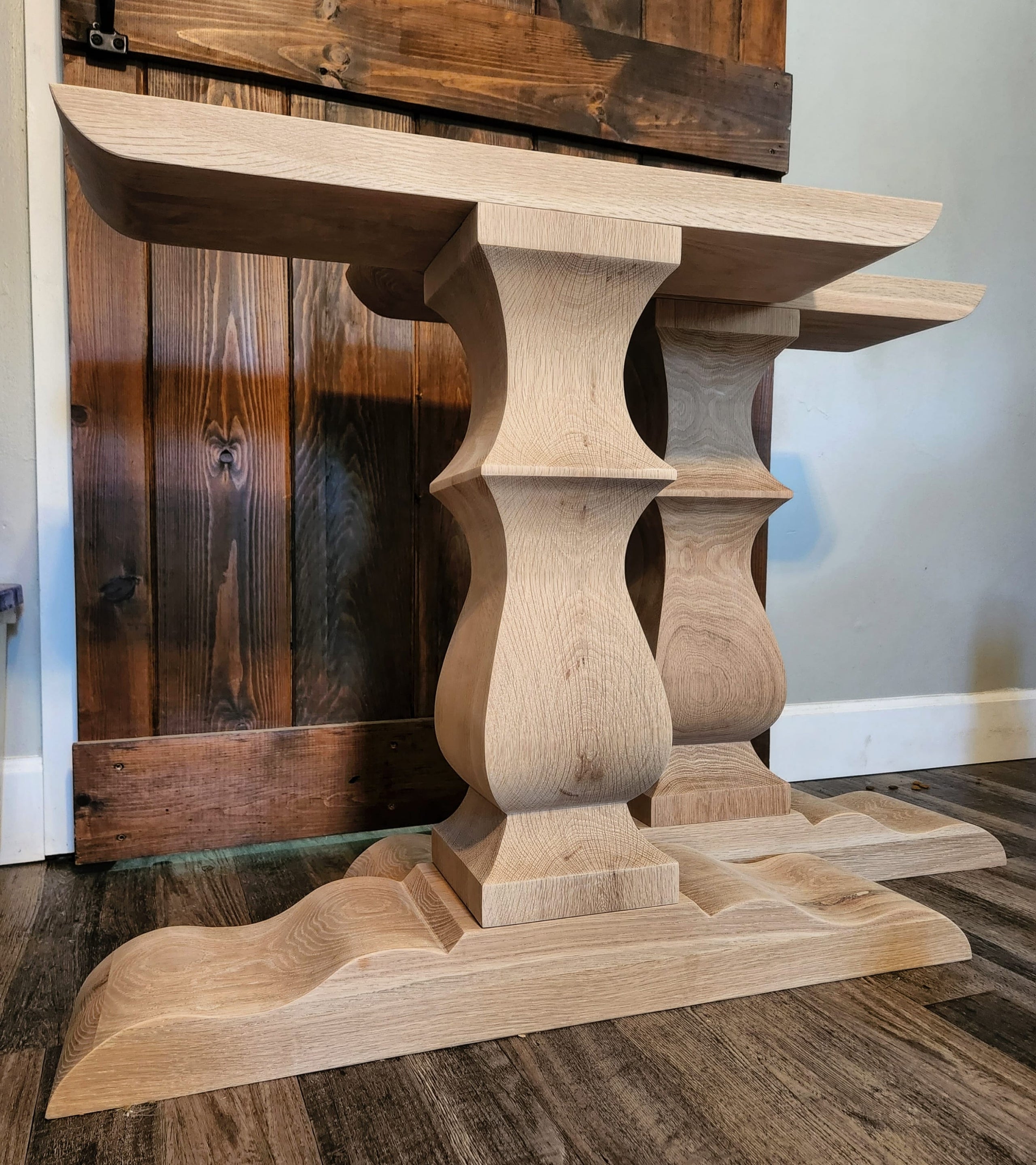Dining Room Table Legs That Integrate Capability and Modern Design
Dining Room Table Legs That Integrate Capability and Modern Design
Blog Article
A Thorough Appearance at Eating Table Leg Styles: Locating the Ideal Match
Selecting the ideal eating table leg design is crucial for both visual allure and sensible functionality. For those with bigger tables, trestle legs ensure durable assistance, whereas hairpin legs present a mid-century modern-day vibe with their minimalist layout. The x-shaped legs blend contemporary design with enhanced security.
Conventional 4 Legs
Amongst the different kinds of table leg styles, the standard four-leg style continues to be a classic option for many homes. This traditional setup provides a harmonious mix of functionality and aesthetics, making it a seasonal fave. Four legs give balanced assistance, making certain the table continues to be secure and qualified of bearing significant weight. This is particularly advantageous for houses that frequently host large gatherings or utilize their dining table for multiple purposes, such as work or crafting.
From a visual point of view, the conventional four-leg design can be conveniently adjusted to different interior designs. Whether crafted from timber, metal, or a mix of products, these legs can be elaborately carved, streamlined and minimalistic, or anything in between. Their adaptability enables them to complement both rustic and modern settings perfectly.
Moreover, the uncomplicated structure of the four-leg design promotes simplicity of movement and positioning within a space. Unlike more facility bases, this style decreases blockages, offering enough legroom for diners. In recap, the standard four-leg table leg design marries sustaining style with practical capability, making it an astute selection for those seeking both kind and function in their eating furniture.
Stand Base
Usually celebrated for its stylish and space-efficient style, the stand base is a distinguished option to the standard four-leg arrangement in eating table leg styles. Without corner legs, diners are paid for higher liberty of activity, making it an ideal choice for round and oval tables that promote more intimate and inclusive events.
Additionally, the stand base's main assistance can take care of substantial weight, enabling the use of heavier tabletops, such as marble or thick hardwood. This strength coupled with its aesthetic flexibility makes the pedestal base a prominent option in both standard and modern indoor settings. It can effortlessly integrate with different style themes, from classic beauty to minimalist modernity. Furthermore, the central column itself offers a canvas for detailed styles and imaginative expressions, including a component of aesthetic rate of interest below the table. In summary, the stand base incorporates functionality with design, making it a refined and sensible choice for diverse dining settings.
Trestle Legs
Trestle legs supply a robust and classic foundation for eating tables, visit the site defined by their straight cross-bracing and durable support light beams. Originating from middle ages times, this style has actually progressed yet retained its essential framework, making it a perennial fave in both traditional and modern setups. The central trestle light beam, typically sustained by two or even more vertical articles, supplies outstanding stability, permitting bigger table lengths without the requirement for additional legs.
A considerable benefit of trestle leg tables is the sufficient legroom they use. Unlike tables with 4 corner legs, the lack of blockages at the table's edges offers unblocked space for chairs and diners, boosting convenience and ease of access. This makes trestle tables excellent for accommodating larger celebrations, whether in an eating room or a reception hall.
From rustic farmhouse to smooth modern-day designs, trestle legs can be personalized to suit individual tastes. Their long-lasting allure and practical benefits make trestle legs an engaging option for those looking for both style and functionality in their eating table.
Hairpin Legs

The appeal of barrette legs hinges on their simplicity and adaptability - dining room table legs. Available in a series of products, including steel and brass, they can be completed in many shades to complement various indoor designs. Whether matched with a rustic wood table top or a modern glass surface, hairpin legs easily mix capability with a touch of vintage appeal
Longevity is another significant attribute of hairpin legs. In spite of their fragile look, these legs are crafted to birth substantial weight, guaranteeing the eating table continues to be secure and secure. Additionally, they are fairly simple to set up, making them a preferred selection for do it yourself fanatics and professional furniture makers alike.
X-Shaped Legs

Built from products such as steel, timber, or a combination of both, X-shaped legs can be tailored to match different design preferences. Steel legs often offer a smooth and industrial feel, perfect for loft-style apartment or condos and modern-day dining rooms. On the other hand, wood X-shaped legs use a warmer, extra rustic charm, ideal for farmhouse or eclectic insides. The versatility in materials permits homeowners to personalize their eating tables to better fit their overall style system.
Furthermore, the engineering behind X-shaped legs makes sure also weight circulation, decreasing the risk of wobbling and enhancing resilience. This makes them especially appropriate for bigger table that need extra assistance. Basically, X-shaped legs mix functional design with modern-day aesthetics, making them a timeless choice for diverse dining environments.
Conclusion
An extensive understanding of eating table leg designs reveals the distinctive features and benefits of each design. Trestle legs make certain durable support for larger tables, and hairpin legs present a mid-century modern visual.
Report this page